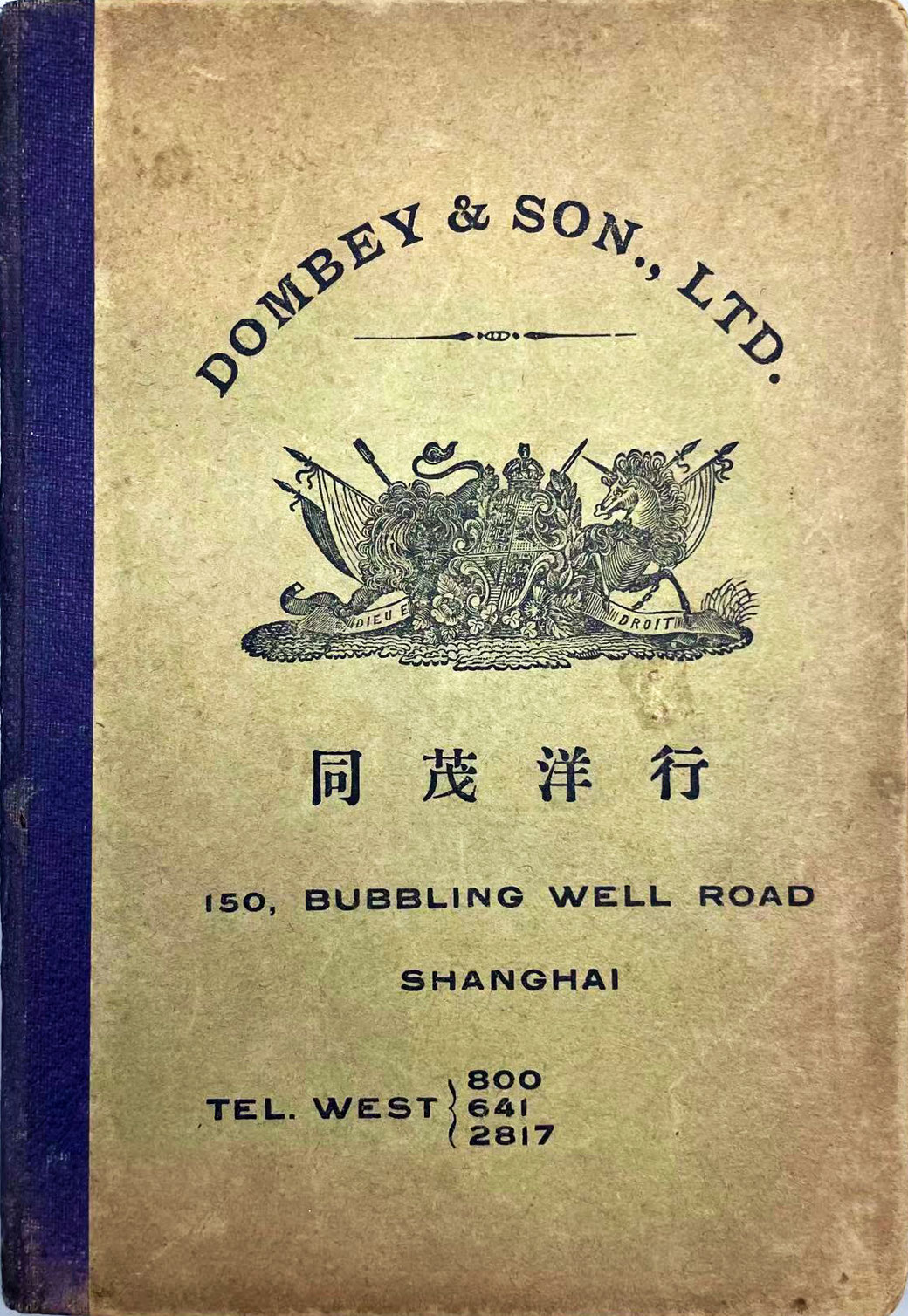

This ca. 1925 passbook for the provision store Dombey & Son from our collection, is the equivalent to the “order history” tab of modern ecommerce or grocery delivery apps. A unique glimpse at how advanced retail was in Shanghai already back then.
Dombey & Son was a high-class grocery store established in 1899 and the location on 143 Bubbling Well Rd (today’s Nanjing West Rd) existed since at least 1909.
As Shanghai grew into an international metropolis the address was renumbered to 150 and later 893, but the actual shop location remained the same for 40 years.

The name Dombey & Son was inspired by the 1847 Charles Dickens novel of the same title and its origin story was retold in a 1924 press article as follows: Apparently a Chinese grocer who catered to foreigners had a name which, when translated, sounded like “Domba”. That led an Englishman to refer to the firm jokingly as Dombey & Son. The Chinese owner liked the name and soon formally adopted it quoted saying “Makee good name. Makee good business. Can do” (…). The veracity of this story is questionable, as the actual name of the store was the “Dung-mow” foreign trading firm (同茂洋行), a name that first appeared in the 1860s for a company founded by the American John Thorne.


Be it as it may, Dombey & Son indeed was eventually owned by foreign proprietors. In 1914 it belonged to an Indian under the name of Viceajee R., after which it was acquired by the grocer Dunning & Co. In 1917 it changed hands again to become part of Griffith’s Stores and in 1928 it was sold to Joseph King & Co. During Japanese occupation it changed its Chinese name to “Big Shanghai Department Store” (大沪百货公司), but after the war existed once again as “Dung-mow” in Chinese until around 1949.
Even though the business apparently was started by Chinese, it always advertised itself as a premier foreign-owned supermarket, as opposed to e.g. Van Shing & Co. (万兴食品号) which we previously wrote about here, and which really was Chinese-owned.

Dombey & Son from the get go offered receiving orders by telephone, “Pass Book” and postal mail, which when placed during business hours would, very much like with today’s O2O digital food or grocery delivery apps in China like Hema, Meituan or Ele.me, be delivered on the same day!
Passbooks, as they are alternatively spelled, allowed customers to hold transaction information in their own hands – just like a digital order history today. Before they were invented, transactions were recorded in ledgers at the bank or merchant only, so customers had no history of their own deposits and withdrawals or in this case grocery orders. It was called a "passbook" because it was used as a way to identify the account holder without needing further identification. It also regularly passed between the bank and the account holder for updating.
Our passbook offers a fascinating overview of the surprisingly modern type of products and brands Shanghai’s elites could have conveniently ordered “online” by telephone and have them delivered “offline” to their doorsteps already in the 1920s: We find advertisements for Hennessey cognac, Folgers coffee and canned foods, but also the availability of fresh eggs, fruits, vegetables, fish and meats. The book also contains ads for complementing goods and services offered in Old Shanghai such as tailors, yeast, shoes, silk hosiery, beer, wines & spirits, hair salons & disinfectants.

From the perspective of our collection on advertising history, this particular Dombey & Son passbook is furthermore of great interest because it was created by the Oriental Advertising Agency (法兴广告公司). This company can rightfully be considered the first real modern advertising agency established in China, a distinction that is often incorrectly attributed to the American Carl Crow Inc., which was only formally established in 1920.
The roots of the Oriental Advertising Agency, however, trace back to the Oriental Press, or La Presse Orientale in French, founded 1897 in Shanghai by the chief engineer of the French Concession J.J. Chollot and his partner E.J. Burgoyne. Alongside its editorial activities (The Review, L'Echo de Chine), the Oriental Press established an advertising department, an art studio, a workshop for manufacturing billboards and even a service specializing in neon lights. Founded in 1909, this internal service division then became an autonomous agency under the name of Oriental Advertising Agency.
In 1930 the pioneering agency was purchased by British Millington Ltd. forming the largest advertisement agency group in China, if not in all of East-Asia at that time.
















































Write a comment